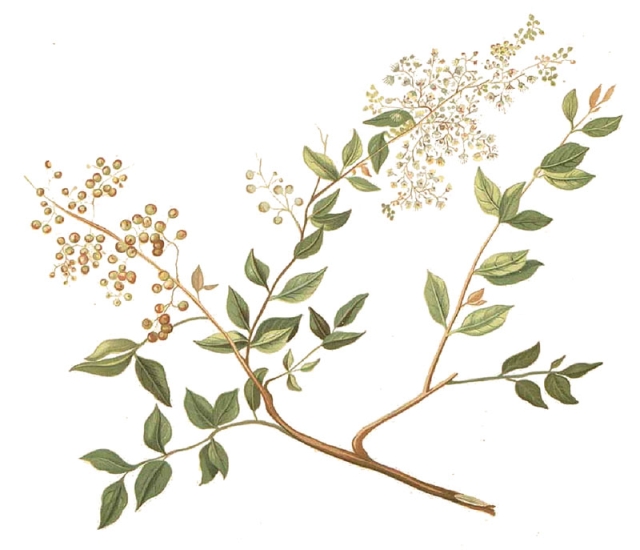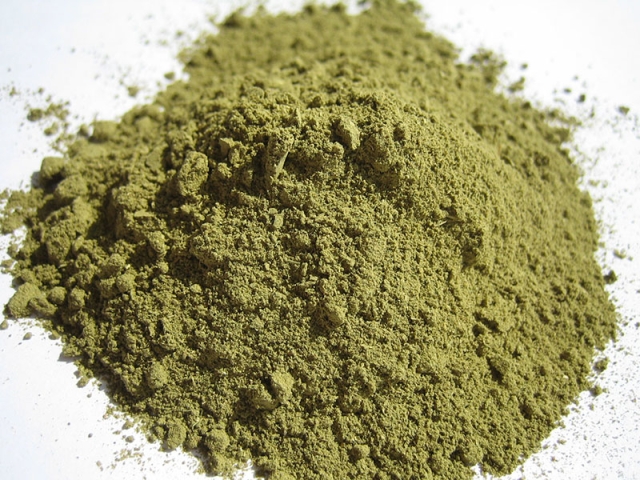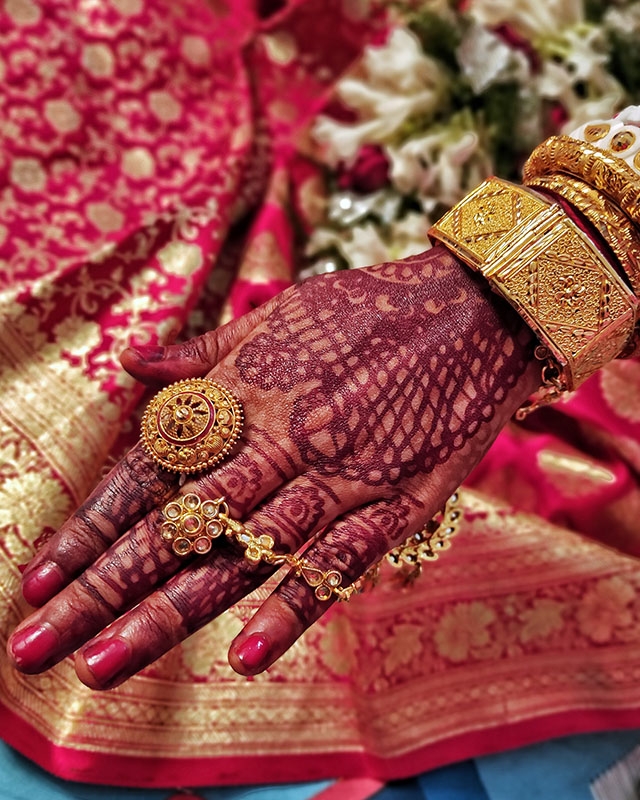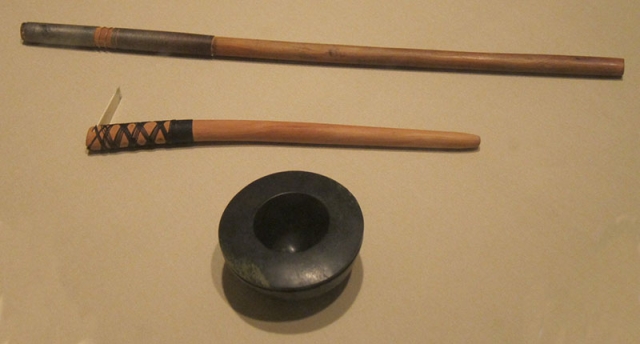Cultural Body Adornment
Adorning the body with paints and dyes, both temporary and permanent, has been a wide practice around the globe and across centuries. The purpose for these decorations has ranged from culturally significant rituals and ceremonies to simple beauty practices. In recognition of Asian American and Pacific Islander Heritage Month, we offer a brief exploration of two historical practices that are still used today.
Lawsonia inermis (commonly known as the henna tree, mignonette tree and the Egyptian privet) is a flowering plant native to much of the south of Asia (including the more specific regions of Southern Asia, Southeastern Asia and the Middle East). The leaves are crushed into a fine powder and mixed with water to make henna, a paste which has, for millennia, been used as a dye to color everything from fabrics such as silk, wool and leather to parts of the body including the hair, fingernails and even the skin, resulting in a rich, deep russet tone when finished.

Lawsonia inermis Blanco

Henna for dying hair.
While henna is used for a wide array of everyday coloring and dyeing, the tradition of decorating the hands and feet in beautiful intricate patterns has grown in notoriety and popularity. The application of henna has become popular as a temporary tattoo, but the art of henna (or mehndi in Hindi) is an important practice that has been performed for centuries in Southern Asia as a ceremony held the day before a wedding. The bride-to-be, surrounded by her closest female friends and family, is beautified and blessed in preparation for the wedding. In Hindu tradition, this beautification and blessing ritual, Solah Shringar, is a series of 16 adornments applied to the bride, each with an individual purpose and belief behind it.
Among these 16 adornments, the purpose of mehndi stems from the deep red color and the long-recognized cooling properties of the henna paste. The color is associated with emotional and fertility-related qualities as well as representing the essence of love; painted on the hands and feet, the intent is to strengthen the bond of love between the bride and groom. When applied to skin, henna has also been known to cool the body, particularly useful in the warmer climates of Southern Asia. It has also been used to relieve stress fever and headaches. These wonderful cooling and medicinal qualities are said to calm the bride’s nerves as she prepares for her new life as a married woman.

Mahendi
Body modifications include the permanent tattoos of the Pacific Islands’ various cultures. The traditional practice of tattooing in Hawaii (kakau) had been almost completely lost to time and the colonization of the islands of Hawaii. To keep their heritage alive, some tattooists have dedicated themselves to practicing only the traditional method of the kakau.
This method requires the use of chisel-like tools, typically made of wood and animal tusk; not at all like the needles that most who are familiar with modern tattoos would see. The ink would have been made from the soot of the fruit of the kukui tree, and then tapped into the skin by the tattooist. The tools and particular tattooing technique were very similar across many peoples of the Pacific, including Samoa and the Maori peoples of New Zealand. While the tools used for these tattoos today are still much the same, the composition of the ink has now change to modern productions.

Instruments for traditional Pacific Island tattooing.
In traditional Hawaiian tattooing, the placement and the tattoo all have a meaning. These tattoos would tell the life story of the individual. Given the lack of antibiotics historically, it was a dangerous procedure to undergo, but the significance far outweighed the risk. The process is a little less risky today, but likely just as painful.
Dig Deeper
Listen to this interview with Keone Nunes, the man renowned for reviving the art of the traditional Hawaiian tattoo.
At the Helen Fowler Library:
“Religious & useful plants of Nepal & India: medicinal plants and flowers as mentioned in religious myths and legends of Hinduism and Buddhism” by Trilok Chandra Majupuria
“Plants in Hawaiian Culture” by Beatrice H. Krauss
There are far too many practices across cultures to name, but if you would like to learn more about the practices of such cultures, particularly those that involved certain plants, the library has a fine selection of books on ethnobotany. The library will be opening again for limited hours in June. All such materials will be available to browse, and members of Denver Botanic Gardens will be able to check books out. Come visit us!
All images public domain, courtesy of Wikimedia Commons.
Add new comment